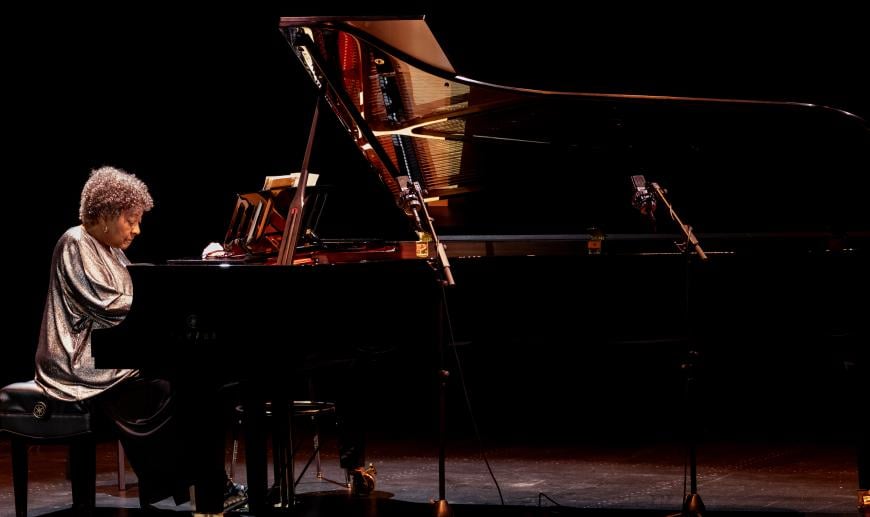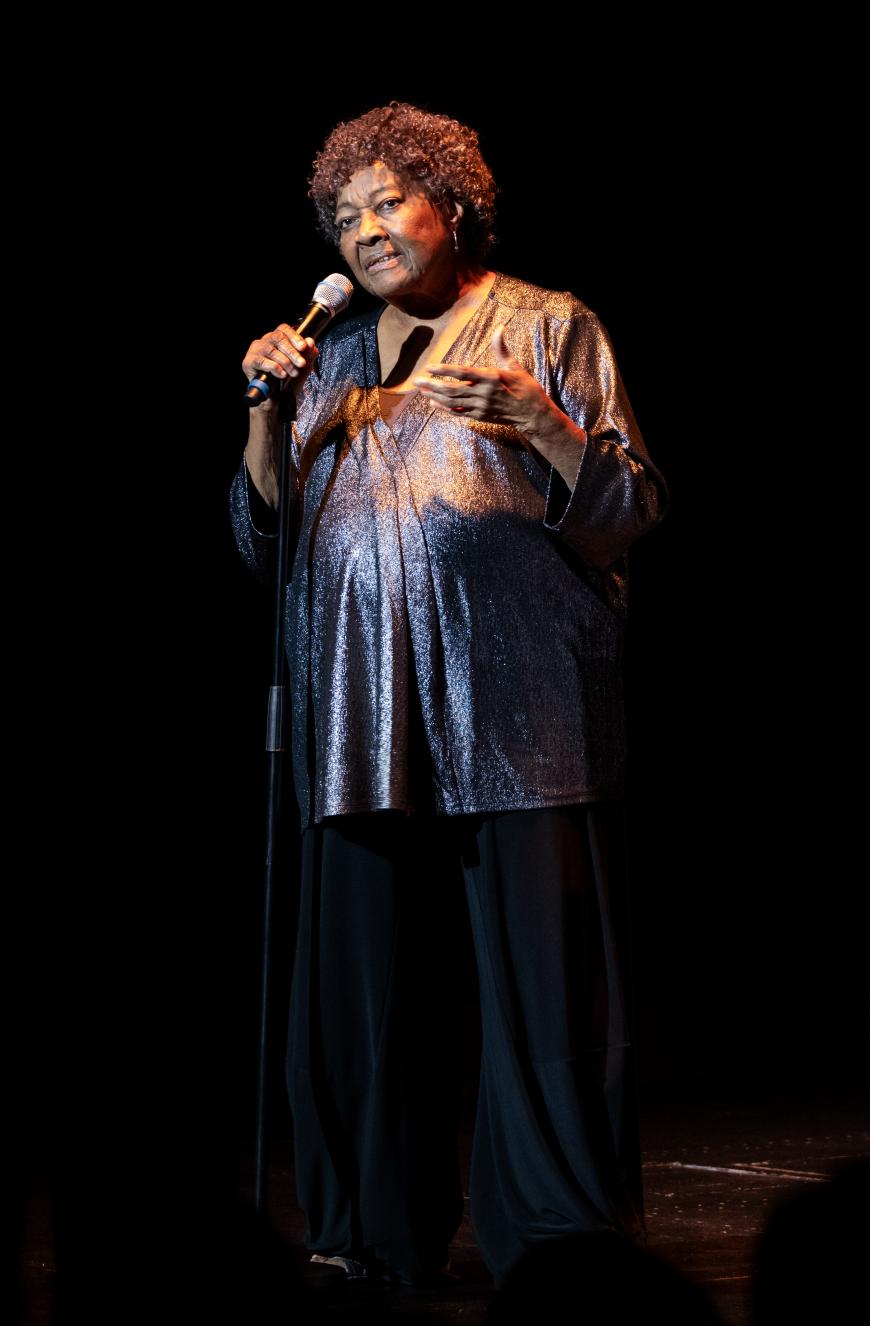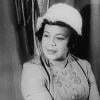
Pianist Althea Waites is often referred to as a trailblazer for her determination in promoting the music of underrepresented Black composers, particularly the work of two women: Florence Price (1887–1953) and Margaret Bonds (1913–1972). And although Waites is consistently modest about the title bestowed upon her — emphasizing the crucial archival research done by musicologist Michael Cooper — the fact remains that Waites has steadfastly performed and recorded these works since 1987, when composers like Price, Bonds, William Grant Still, and Samuel Coleridge-Taylor were rarely featured.
Waites’s recital on Tuesday, Jan. 16, “Momentum: Time and Space,” represented a first collaboration between Piano Spheres and UCLA’s Center for the Art of Performance at its new Nimoy Theater. And the Black (music) history point of the program was not lost; this was the evening after Martin Luther King Jr. Day.
Surprisingly, music by Bonds and Coleridge-Taylor represented only a fragment of the concert and only a tiny sampling of these composers’ oeuvres.
Still, two of the three Bonds pieces, “Flamenco” and “Fugal Dance,” were receiving their world premieres. A decade ago, a trove of Bonds manuscripts — more than a thousand pages’ worth — was saved from the recycling bin after failing to attract an interested buyer at an antiquarian book fair.
The three short pieces Waites played (the third titled “Tangamerican”) did offer a sense of this composer’s exceedingly diverse musical vocabulary, blending elements of romanticism, international dance forms, sophisticated jazz, dissonant modernism, and melodies drawn from the great wellspring of African American spirituals.
Samuel Coleridge-Taylor (1875–1912) was of British African decent and a contemporary of the English pastoral composers, who freely incorporated folk melodies and dances into their works. Three-Fours is the clever title he chose for a suite of six waltzes, two of which Waites performed. Both floated gently by.
From that point on, the concert moved into the realm of the contemporary with celebrated Cuban composer Tania León’s Momentum (1982), American classical-jazz fusionist Jeremy Siskind’s Such Harmonious Madness (2019), and Frederic Rzewski’s monumental variations on “Down by the Riverside,” one of his North American Ballads (1979).

Throughout, Waites carried on an animated conversation with her audience, offering biographical, historical, and cultural insights into the pieces, along with an assessment of their varying degrees of difficulty, topped by the virtuosic requirements set down by Rzewski.
As the recital moved from past to present, Waites’s performance seemed to gain strength from the music’s complexity: the polyrhythms and modulations that contrasted harmonically flowing dances with thorny dissonance. It was an intriguing balancing act that was perfectly defined by Leon’s Momentum, showcasing the composer’s use of Caribbean polyrhythms and modernist harmony. These works, far more substantial than the miniatures that opened the program, allowed Waites the breadth to show her expressivity, technical virtuosity, and accumulated interpretive wisdom.
Even more complex were the five contrasting sections of Siskind’s Such Harmonious Madness, which shifted between syncopated jazz interludes, dissonant accents, and fragile melodic spiderwebs reminiscent of Erik Satie.
Of course, after explaining what a challenge it was to play Rzewski’s “Down by the Riverside,” Waites proceeded to perform it with virtuosic bravado. One moment was as soulful as a rendition by Odetta, the next as layered as a freeway interchange.
The enthusiastic response to Waites’s recital elicited an appropriate encore, Oscar Peterson’s “Hymn to Freedom.”
While Piano Spheres’ use of The Nimoy provides the organization a much-needed concert venue on the west side of Los Angeles, the theater’s acoustical properties for piano recitals are far from ideal. The cloth murals that cover the auditorium walls (a legacy left by the theater’s previous owners, the Walt Disney Company) require all performances to be amplified, substantially affecting the natural tones and voicing of the instrument. Classical music represents a minute portion of CAP UCLA’s programming, however, so the acoustics of the hall are unlikely to be improved.
Piano Spheres will return to The Nimoy in May for a recital by piano duo HOCKET.
Correction: As originally published, this article misidentified Waites’s encore. It was Oscar Peterson’s “Hymn to Freedom,” not Bob Dylan’s “Chimes of Freedom.”




